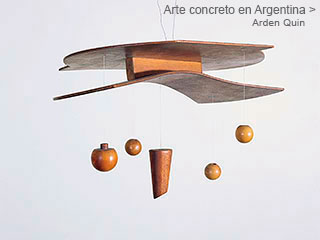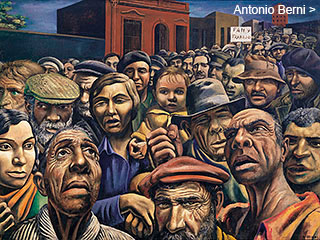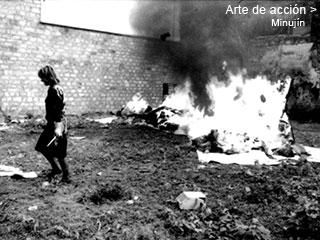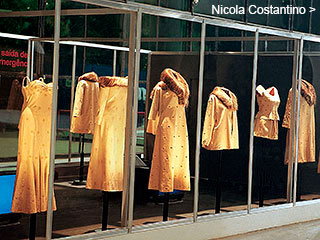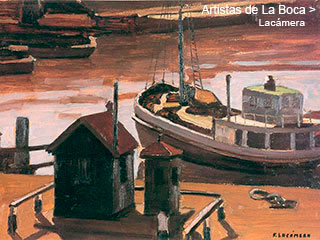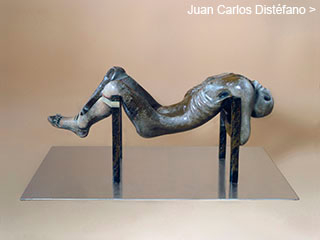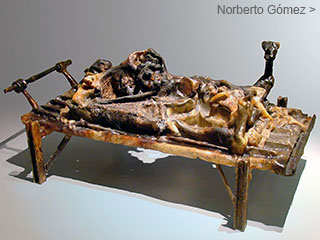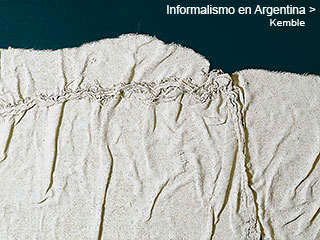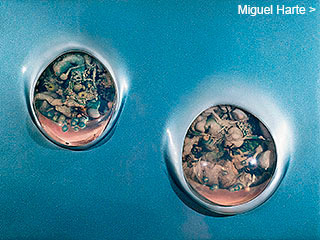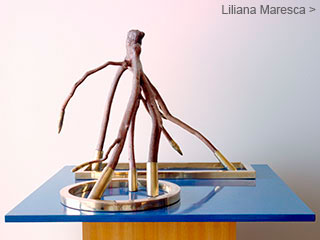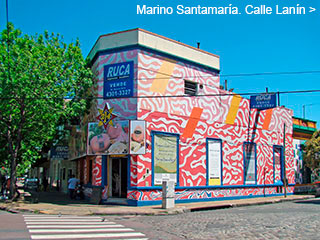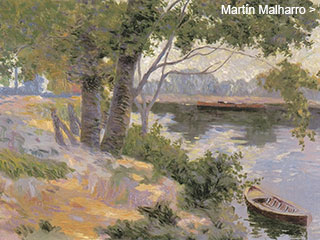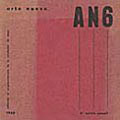Menú
Algunos dossiers
Concrete Art
in Argentina
in Argentina
by
Adriana Lauria
January 2003
January 2003
Abstraction asserted itself in Argentina through the achievements of groups such as Arte Concreto-Invención, Madí and Perceptismo, which developed their activity since the second half of the 1940s. These groups constituted the first organized national avant-garde and made their aesthetics known to the public through exhibitions, magazines, manifestoes, leaflets, lectures, etc.
Documents
Aldo Pellegrini
Aldo Pellegrini. "Al presentar la 6ª exposición anual...", (On Introducing the 6th. Annual Exhibition), in 6° Salón Anual Arte Nuevo (exhibition’s catalogue). Buenos Aires, Museo Eduardo Sívori, 1960.
On introducing the 6th annual exhibition of NEW ART, I cannot but remember that the catalogue of the exhibition with which the Asociación ARTE NUEVO (New Art Association) opened its activities in 1955 carried an introduction I wrote. In this 6-year short period a great change has taken place in contemporary painting; it is a change of direction: painting has shifted from the intellectual to the vital. There is no doubt that no change is a gratuitous one, for the artist is an antenna focused on the reality surrounding him. More than ever, that reality is today impregnated of man’s spiritual atmosphere, founded in the struggle between his material creations, his technical world and his hopes for a better living, an integral living. The artist’s mission is to make visible, using the means that are inherent to him, all the invisible reality which surrounds us. Moved by these mechanisms, an immense vital ferment prompts artistic creation in our days. The contemporary artist erases the false line drawn between objectivity and subjectivity. He often escapes from the precise lines which limit his intense need to directly and crudely express the vital. Never as now has painting asserted man as an integrality–living man in addition to thinking man, concrete man, not the abstraction of man. This does not mean that progress in the field of pure visual expressions has stopped; in the field where rigorous forms are used there is also a tendency towards kinetics, towards movement, towards the use of the energetic qualities of forms or the dynamizing of space. The positive thing is that the opening angle of contemporary painting has widened to its most, ranging from the rigorous to the informal, passing through every possible intermediate point. Painting thus takes position in man’s world, it is not indifferent about his problems; it incorporates those problems and transmutes them into that fiery and eloquent matter which is the matter of art.


